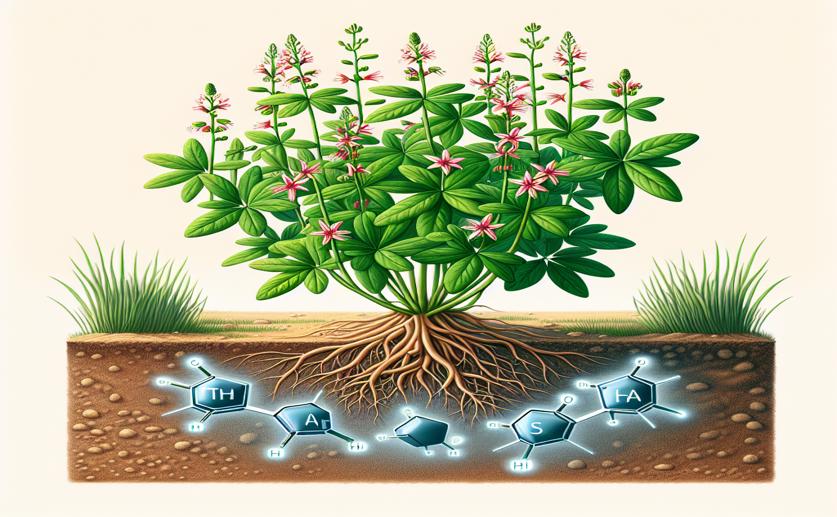
Boosting Salt Tolerance in Licorice Plants with Betaine
Jenn Hoskins
4th March, 2024

Image Source: Natural Science News, 2024
Key Findings
- In a Shihezi University study, licorice seedlings treated with glycine betaine (GB) showed improved growth in salty soil
- GB treatment increased root size and boosted protective substances in the plants
- Treated seedlings were better at removing excess salt, especially sodium ions, from their leaves
AgricultureBiochemPlant Science
References
Main Study
1) Exogenous betaine enhances salt tolerance of Glycyrrhiza uralensis through multiple pathways.
Published 2nd March, 2024
https://doi.org/10.1186/s12870-024-04851-w
Related Studies
2) Alleviation of salinity stress by EDTA chelated-biochar and arbuscular mycorrhizal fungi on maize via modulation of antioxidants activity and biochemical attributes.
3) Disclosing the effect of exogenous betaine on growth of Suaeda salsa (L.) Pall in the Liaohe coastal wetland, North China.
4) Exogenous hydrogen sulfide mediates Na+ and K+ fluxes of salt gland in salt-secreting mangrove plant Avicennia marina.
5) Maternal Effects of Habitats Induce Stronger Salt Tolerance in Early-Stage Offspring of Glycyrrhiza uralensis from Salinized Habitats Compared with Those from Non-Salinized Habitats.



 5th February, 2024 | Jim Crocker
5th February, 2024 | Jim Crocker